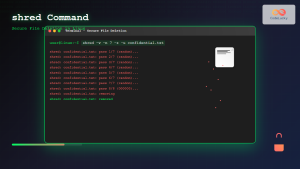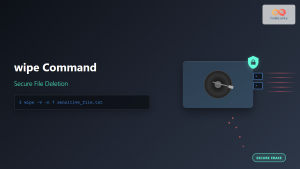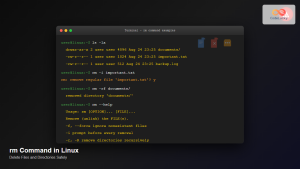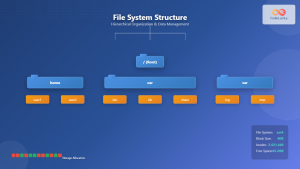Java provides robust file handling capabilities, including the ability to delete files from the system. Whether you're cleaning up temporary files, managing user-generated content, or implementing a file management system, understanding how to delete files in Java is crucial. In this comprehensive guide, we'll explore various methods to delete files, handle potential exceptions, and discuss best practices for file deletion in Java applications.
Understanding File Deletion in Java
Before we dive into the code, it's important to understand what happens when we delete a file in Java:
- The file is removed from the file system.
- The space occupied by the file is marked as available for future use.
- The file's contents are not immediately overwritten, making recovery possible in some cases.
🔑 Key Point: File deletion in Java is typically a permanent operation. Always ensure you have proper safeguards in place to prevent accidental deletion of important files.
Basic File Deletion Using java.io.File
The simplest way to delete a file in Java is by using the delete() method of the java.io.File class. Let's look at a basic example:
import java.io.File;
public class FileDeleteExample {
public static void main(String[] args) {
File fileToDelete = new File("example.txt");
if (fileToDelete.delete()) {
System.out.println("File deleted successfully");
} else {
System.out.println("Failed to delete the file");
}
}
}
In this example:
- We create a
Fileobject representing the file we want to delete. - We call the
delete()method on this object. - The
delete()method returnstrueif the deletion was successful, andfalseotherwise.
🚨 Warning: The delete() method doesn't throw an exception if the file doesn't exist or if the deletion fails. Always check the return value to confirm the operation's success.
Deleting Files Using java.nio.file.Files
Java 7 introduced the java.nio.file package, which provides more powerful and flexible file operations. The Files.delete() method offers a more robust way to delete files:
import java.nio.file.*;
public class NioFileDeleteExample {
public static void main(String[] args) {
Path path = Paths.get("example.txt");
try {
Files.delete(path);
System.out.println("File deleted successfully");
} catch (NoSuchFileException x) {
System.err.format("%s: no such file or directory%n", path);
} catch (DirectoryNotEmptyException x) {
System.err.format("%s not empty%n", path);
} catch (IOException x) {
System.err.println(x);
}
}
}
Advantages of using Files.delete():
- It throws specific exceptions, allowing for more precise error handling.
- It works with the
Pathinterface, which is more flexible thanFile.
💡 Tip: Use Files.deleteIfExists(path) if you want to delete a file only if it exists, without throwing an exception if it doesn't.
Deleting Directories
Deleting directories in Java requires a bit more care, especially if the directory isn't empty. Let's look at how to delete a directory and its contents recursively:
import java.io.IOException;
import java.nio.file.*;
import java.nio.file.attribute.BasicFileAttributes;
public class RecursiveDirectoryDelete {
public static void main(String[] args) throws IOException {
Path directory = Paths.get("example_directory");
Files.walkFileTree(directory, new SimpleFileVisitor<Path>() {
@Override
public FileVisitResult visitFile(Path file, BasicFileAttributes attrs) throws IOException {
Files.delete(file);
return FileVisitResult.CONTINUE;
}
@Override
public FileVisitResult postVisitDirectory(Path dir, IOException exc) throws IOException {
Files.delete(dir);
return FileVisitResult.CONTINUE;
}
});
System.out.println("Directory deleted successfully");
}
}
This example uses Files.walkFileTree() to traverse the directory structure:
visitFile()is called for each file in the directory, deleting it.postVisitDirectory()is called after visiting all the files in a directory, deleting the now-empty directory.
🔒 Security Note: Be extremely cautious when implementing recursive deletion. Ensure you have proper safeguards to prevent accidental deletion of important system files or directories.
Best Practices for File Deletion in Java
When implementing file deletion in your Java applications, consider these best practices:
- Always check permissions: Ensure your application has the necessary permissions to delete the file or directory.
if (!Files.isWritable(path)) {
System.err.println("No permission to delete the file");
return;
}
- Use try-with-resources for file operations: This ensures that file handles are properly closed, even if an exception occurs.
try (DirectoryStream<Path> stream = Files.newDirectoryStream(directory)) {
for (Path file: stream) {
Files.delete(file);
}
} catch (IOException e) {
e.printStackTrace();
}
- Implement a confirmation mechanism: For critical deletions, always ask for user confirmation.
import java.util.Scanner;
// ... inside your deletion method
Scanner scanner = new Scanner(System.in);
System.out.print("Are you sure you want to delete this file? (y/n): ");
String response = scanner.nextLine();
if (!response.equalsIgnoreCase("y")) {
System.out.println("Deletion cancelled");
return;
}
- Log deletion operations: Keeping a log of file deletions can be crucial for debugging and auditing.
import java.util.logging.Logger;
private static final Logger LOGGER = Logger.getLogger(YourClass.class.getName());
// ... in your deletion method
LOGGER.info("Deleting file: " + file.getAbsolutePath());
- Consider using a "recycle bin" approach: Instead of immediate deletion, move files to a designated directory for potential recovery.
public static void moveToRecycleBin(Path source) throws IOException {
Path recycleBin = Paths.get("recycle_bin");
if (!Files.exists(recycleBin)) {
Files.createDirectory(recycleBin);
}
Files.move(source, recycleBin.resolve(source.getFileName()));
}
Handling Large File Deletions
When dealing with very large files, the deletion process can take a significant amount of time. In such cases, it's a good practice to perform the deletion in a separate thread and provide feedback to the user:
import java.nio.file.*;
import java.util.concurrent.*;
public class LargeFileDeleteExample {
public static void main(String[] args) throws Exception {
Path largeFile = Paths.get("very_large_file.dat");
ExecutorService executor = Executors.newSingleThreadExecutor();
Future<Boolean> future = executor.submit(() -> {
try {
Files.delete(largeFile);
return true;
} catch (IOException e) {
e.printStackTrace();
return false;
}
});
while (!future.isDone()) {
System.out.println("Deleting file... Please wait.");
Thread.sleep(1000); // Wait for 1 second before checking again
}
if (future.get()) {
System.out.println("Large file deleted successfully");
} else {
System.out.println("Failed to delete the large file");
}
executor.shutdown();
}
}
This approach has several benefits:
- It doesn't block the main thread, allowing your application to remain responsive.
- You can provide real-time feedback to the user about the deletion progress.
- You can implement a cancellation mechanism if needed.
🚀 Performance Tip: For extremely large files or when deleting many files, consider using memory-mapped files or native system calls for improved performance.
Conclusion
Mastering file deletion in Java is crucial for developing robust file management systems and maintaining clean, efficient applications. From the basic File.delete() method to more advanced techniques using the NIO.2 API, Java provides a range of tools to handle file deletion in various scenarios.
Remember to always handle exceptions properly, implement safeguards against accidental deletions, and consider the performance implications when dealing with large files or directories. By following the best practices outlined in this guide, you'll be well-equipped to implement secure and efficient file deletion operations in your Java applications.
🔍 Further Exploration: As you continue to work with file operations in Java, consider exploring topics like file locking, asynchronous I/O, and platform-specific file attributes to further enhance your file handling capabilities.
Happy coding, and may your file systems always be clean and well-managed!


















